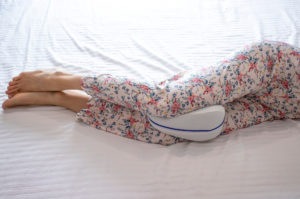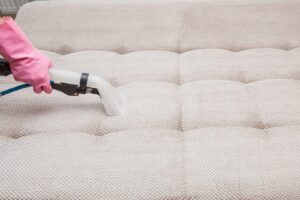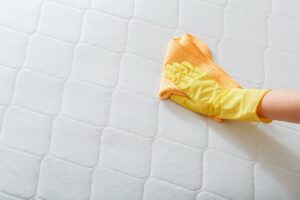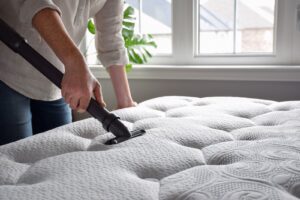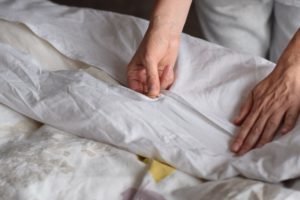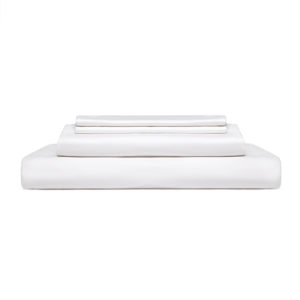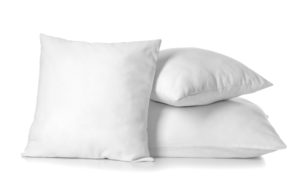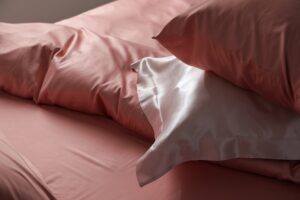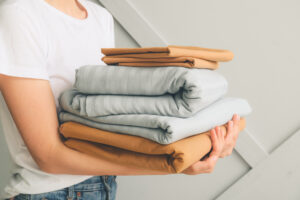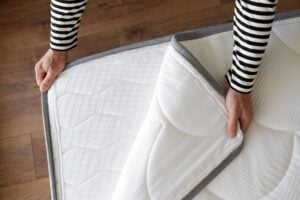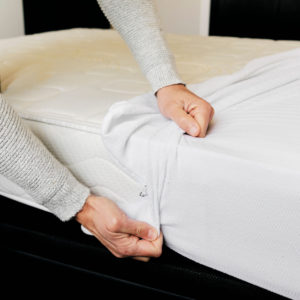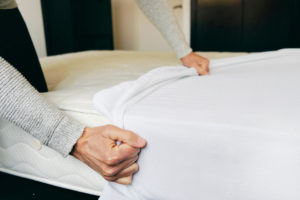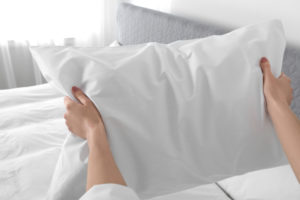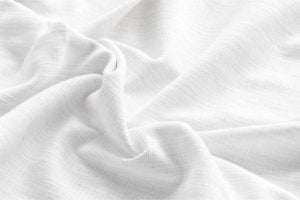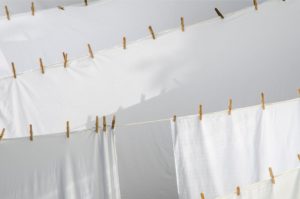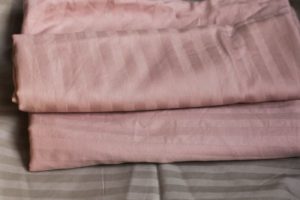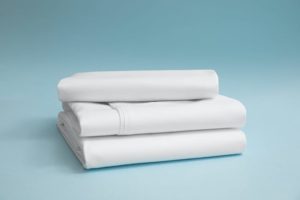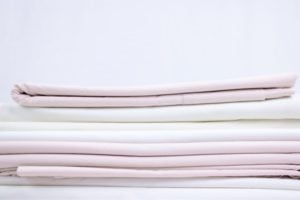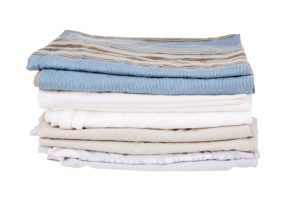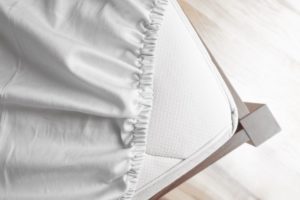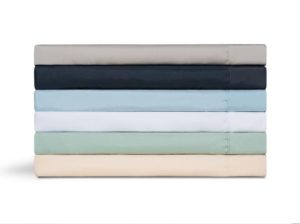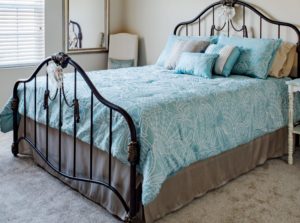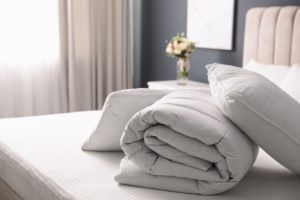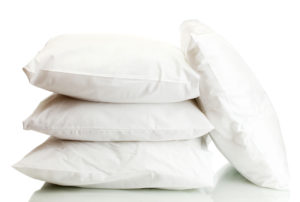What Is a Duvet Cover?
A duvet cover is a removable fabric layer that goes over a duvet—similar to how a pillowcase covers a pillow—protecting it from dirt and wear while making it easier to clean. Available in materials like cotton, flannel, and silk, duvet covers also let you change the look and feel of your bedding with ease.
Ever wished your comforter could be cozier, more stylish, and easier to clean? That’s where duvet covers come in. These covers are easily removed, letting you refresh the look and feel of your bed in minutes, while also protecting your comforter from spills, sweat, and daily wear. Whether you’re going for crisp cotton, cozy flannel, or silky-soft sateen, a duvet cover makes it easy to mix comfort with convenience.
What Is a Duvet?
First off, a duvet is what goes inside the duvet cover. It’s essentially a soft, top-layer blanket designed to keep you warm without feeling heavy. Traditionally filled with down (the fluffy layer beneath a bird’s feathers), duvets now come in a range of fills like down alternative, wool, or polyester.
Down duvets are often rated by fill power, which indicates warmth—around 400 for a lightweight summer feel, 600+ for winter coziness, and 400 to 600 for year-round use. To prevent clumping, the duvet shell is often stitched in patterns that keep the fill evenly distributed. And since they go inside a cover, duvets typically come in solid, light colors, such as white or off-white.
What Is a Duvet Insert?
The duvet insert is another way to refer to the duvet itself. The main reason for specifying it as a duvet insert is to distinguish it from a duvet cover.
What Is a Duvet Cover?
A duvet cover, then, is the protective shell that slips over your duvet, much like a pillowcase, and typically closes with buttons, ties, snaps, or a zipper to keep the insert in place. It helps shield your duvet from sweat, oils, and spills—especially since many people use it without a top sheet—and is usually much easier to clean than the duvet itself. Beyond practicality, duvet covers are an easy way to switch up your bedroom’s look or add a different texture or feel to your bedding.
What Is a Duvet Set?
Lastly, a duvet set typically includes a duvet cover and one or two matching pillow shams, giving your bedding a cohesive, polished look. Some sets may also include additional pieces like decorative throw pillows or a fitted sheet, but the main function is to simplify styling your bed while protecting your duvet.

What Are Duvet Covers Made Of?
When choosing a duvet cover, lightweight, breathable fabrics like cotton tend to be the most common. However, there are also other options. Typically, fabrics made from natural materials are more breathable than synthetic fabrics, but they also tend to be more expensive. Here are a few fabric options available for duvet covers:
Cotton
Cotton is the most popular choice for duvet covers. It’s light, soft, and breathable, which makes it great for staying warm on cooler nights and cool when the weather heats up. Cotton is also easy to care for, which is a big plus if you’re looking for low-maintenance bedding.
There are several types of cotton to choose from, too. Organic cotton is a great option for eco-conscious shoppers who value sustainable materials. If you’re looking for something a bit more luxurious and long-lasting, higher-end varieties like Pima, Supima, and Egyptian cotton are known for their durability and smooth feel.
Linen
Linen duvet covers are known for their breezy texture, lived-in look, and year-round comfort. Made from the fibers of the flax plant, linen is naturally breathable and moisture-wicking, which helps regulate temperature whether it’s warm or cool outside. It also softens over time without losing its durability. However, linen tends to wrinkle easily and can be more expensive than other fabrics.
Flannel
Flannel duvet covers are a cozy go-to for cold nights, thanks to their soft feel and excellent warmth. The fabric is designed to be durable and is usually easy to care for, as most options are machine-washable. Just keep in mind that flannel can feel too warm in the summer months, so it’s a good idea to have a lighter duvet cover on hand for when the seasons change.
Silk
Silk duvet covers are light, breathable, and naturally great at regulating temperature, making them a comfortable choice year-round. The smooth, cool feel of silk adds a touch of luxury, but it usually comes with a higher price tag. The good news is that silk doesn’t need to be washed as often as other materials. When it does need cleaning, always check the care instructions: If it’s machine-washable, it’s best to use a protective bag and let it air dry to keep it looking and feeling its best.
Duvet vs. Comforter: What’s the Difference?
While both can serve as the top layer of bedding, there are some key differences between a duvet and a comforter.
- Fill: Duvets are typically stuffed with more fill than comforters. Duvets are fluffy and airy, while comforters are often a bit thinner.
- Cover: Duvets are meant to be used with a duvet cover, but comforters come with a more finished shell. Typically, a comforter is used with a flat sheet instead of a cover. However, covers can be used on either a duvet or a comforter for added protection, ease of cleaning, or to change the appearance of a bedroom.
- Temperature Regulation: The extra fiberfill found in a duvet provides warmth and helps regulate temperature on a cold night. While there are comforters that can be used year-round, a standard comforter may require an additional blanket for warmth in the winter months.
- Price: Since duvets are traditionally filled with down, they tend to be more expensive than most comforters. Comforters are generally more budget friendly and can be purchased as part of a full set of bedding that includes matching sheets and pillowcases. Duvets are usually sold separately from other bedding.
Frequently Asked Questions
Can you use a duvet cover by itself?
Yes, some people use duvet covers on their own as a lightweight blanket in warmer months, but they’re typically designed to be paired with a duvet insert for warmth and fullness.
Can I use a duvet cover with a comforter?
You can use a duvet cover with a comforter, especially if the comforter fits well inside and has loops or corners to help it stay in place.
Do you put a bedspread over a duvet?
You can, but it’s not necessary. A bedspread can be layered over a duvet for extra warmth or decorative purposes, depending on your style and climate.
How often should I wash a duvet cover?
Duvet covers should generally be washed every 1 to 2 weeks, similar to bed sheets, since they come in direct contact with your skin.

Still have questions? Ask our community!
Join our Sleep Care Community — a trusted hub of sleep health professionals, product specialists, and people just like you. Whether you need expert sleep advice for your insomnia or you’re searching for the perfect mattress, we’ve got you covered. Get personalized guidance from the experts who know sleep best.


